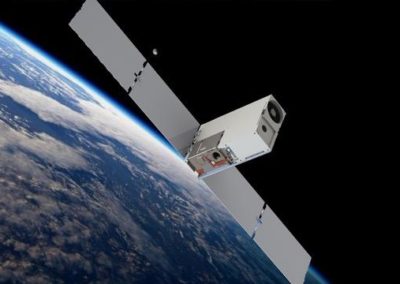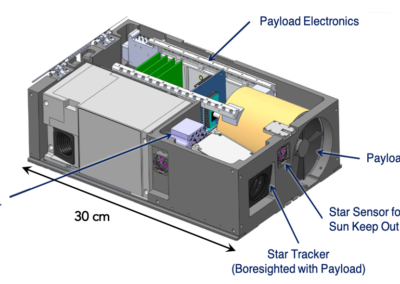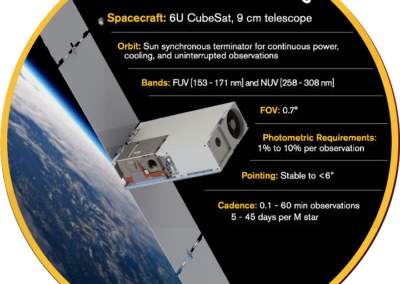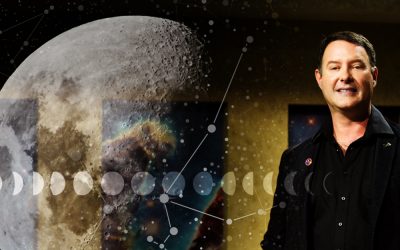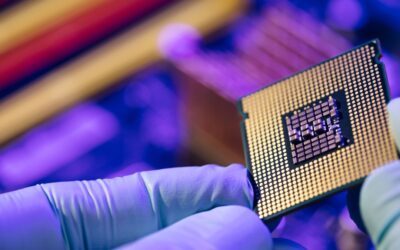Evgenya Shkolnik and ASU SPARCS Continue to Innovate with CubeSats
An ASU team is collaborating with NASA and commercial space companies to send a CubeSat to space to conduct research that will allow scientists to understand the evolution and habitability of planets.
The Star-Planet Activity Research CubeSat (SPARCS) project will study low mass stars that are the dominant hosts of exoplanets throughout their lifetimes.
Evgenya Shkolnik, associate director at the Interplanetary Initiative, associate professor of astrophysics at ASU’s School of Earth and Space Exploration and the principal investigator on the project, decided to create SPARCS after studying stars with the Hubble Space Telescope.
“I had the idea to build our own small dedicated ultraviolet space telescope so that we can point it at a star and stare at it for weeks or a month at a time, and catch all these rare flares which would take up too much time from the very big flagship missions that are shared with the whole community,” Shkolnik said.
The 16-inch long CubeSat consists of three major systems – a 9-cm telescope, a UV camera and operational and science software, which will be loaded onto a spacecraft and sent into orbit. The team at ASU is working with Hexagon, Blue Canyon Technologies and NASA’s Jet Propulsion Laboratory to assemble the payload.
The telescope was purchased from Hexagon and flown from Maryland to Arizona, the spacecraft will be purchased from Blue Canyon Technologies and the camera is being assembled at JPL. Once all of the parts arrive at ASU, they will be assembled on campus and launched from Arizona.
“It’ll probably take nearly a year for us to get the spacecraft at ASU, and once that happens, we’ll integrate the camera, electronics, star tracker, spacecraft, telescope, everything,” Shkolnik said.
Other SESE professors working on SPARCS include Judd Bowman, mission operations system lead, Daniel Jacobs, systems engineer, and Paul Scowen, payload lead.
Once the CubeSat is launched, Shkolnik and her team hope to answer a multitude of questions about stars and exoplanets.
“Once we characterize the stars and their flares and their UV energy, we’ll also understand the high energy radiation environment of the planets that orbit them, including small rocky planets like the Earth and the impact the stars will have on small habitable zone planets,” Shkolnik said.
Additionally, Shkolnik is excited about the possibilities for research with the use of CubeSats. The small satellites allow for projects to be focused primarily on one specific topic, enabling researchers to collect more in-depth data that will create a better understanding of space.
“This is where CubeSats are really quite perfect because you can design them to do one experiment really, really well,” Shkolnik said. “It’s very exciting science (that) cannot be done with any other instruments right now.”
SPARCS is expected to launch to a Sun-synchronous orbit by the end of 2023.
Written by Reagan Priest for ASU NewSpace
Related Articles
Is a weekend on the moon around the corner?
ASU professor Jim Bell talks about why deep space is the new economic frontier
NASA Selects ASU Student Design as a 2024 BIG Idea Challenge Finalist
@ASUNewSpace Congratulates the ASU Luminosity Lab's AEGIS team including @Jim_Bell, ASU NewSpace Director and Jim Rice, Associate Director Science and Research
Strengthening semiconductor skills at ASU’s SWAP Hub
Provisions in the CHIPS and Science Act sponsored the creation of eight Microelectronics Commons Hubs around the country to conduct microelectronics research
Announcing the Southwest Advanced Prototyping (SWAP) Hub Led by Arizona State University
An innovative, collaborative ecosystem hub at ASU designed to accelerate development and production of U.S. microelectronics technologies


